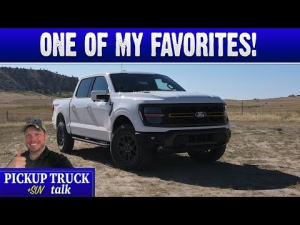A Look at Semi-Trucks From the Past, Present, and Future
Semi-trucks have been the backbone of American commerce since cars first rolled off the production line. They travel thousands of miles in their lifetimes, they’ve been used in wars, and I can assure you that everything you have in your house was, at one point, on a truck. But how have trucks changed over the years? What’s new about today’s semis, and how are they going to change in the future?
The semi-trucks of yesteryear were simple, and powerful
We’ll start with a brief history of the semi-truck, and why it became a go-to method for transportation. Alexander Winton built what is widely accepted to be the first 18-wheeler in 1898. Originally, it was built to transport cars, or rather a singular car, from destination to destination. But it spiraled into what we know today due to one industry: logging.
With many Americans looking to buy land, and many cities developing suburbs after each war, clearing land became incredibly popular, and those trees had to go somewhere. Mack trucks came around in 1900, and are said to have started a “trucking boom” in the 1920s. But over the years, the load size hasn’t changed all that much, and yet there’s still one advantage older big rigs have over modern ones.
RELATED: The Incredible Rediscovery of Ford’s 1-of-1 Turbine Semi-Truck
Part of the appeal to a mechanically simple truck is that the parts were cheap and the maintenance was basic. An owner-operator pays for their vehicle’s expenses out of pocket, so the less there is to go wrong, the less money the driver has to spend on it.
Take, for instance, the International Transtar Cabover, as pictured above. These were the popular pick of the 80s, capable of carrying 144,000lbs. And it was cheaper than some of the “longnose” options like Kenworth or Peterbilt. The truck Catherine McMiller writes about on SmartTrucks had a Detroit V8 engine rated at 318 horsepower mated to a 13-speed transmission. But “It did its job and did it well!”
So the appeal of older trucks is that there’s less to them. But how about today’s 18-wheelers?
Modern trucks are loaded with high tech features

You’d be hard-pressed to find a truck on sale today that didn’t have air brakes, power steering, and sensors. In fact, according to Trucker.com, advanced driver assistance systems are standard on most big rigs. Now more than ever, they’re built to keep the driver safe.
If you think the technologies of tomorrow only apply to cars, then you’re sorely mistaken. Mack is introducing over-the-air software updates, just like Tesla is doing with their electric cars. And Kenworth has Level 2 Autonomous Driving options for almost all of their trucks, which is bound to make longer trips a breeze.
RELATED: There Are Completely Autonomous Trucks Among Us
But other areas of concern that weren’t prioritized in the past are things like aerodynamics and safety. Before, trucks were designed like walls because, well, they looked cool. And needed lots of room to fit those massive diesel engines. But now, trucks are a bit more “swoopy,” and save owners or companies a couple of bucks in gas. After all, it’s expensive to fuel up a 125 to 300-gallon tank.
And then there are creature comforts, such as air conditioning and cabin noise. Drivers today have pleasant sleeping quarters and refrigerators, rather than just a couple of foam pads and a cooler full of ice. And while the future of trucking will be aimed at making the driver’s life easier, we’re also heading toward new, zero emissions, powertrains.
18-wheelers are going electric, but the question is how

On the market today are two prominent types of electric trucks: battery-electric, and hydrogen. One is powered by a battery that delivers electricity to the car. The other is powered by fuel cells, which store hydrogen and convert it to water to create the electricity needed. Both produce no emissions, but benefit truckers differently.
Manufacturers, such as Tesla, are toying with electric trucks. Different models range from 300 to 500 miles, and maintaining an electric truck is certainly cheaper than maintaining a hydrogen truck.
Before you jump on the “that’s not enough range” bandwagon, electric trucks only need to drive for 11 hours a day. If the driver is averaging 65 mph, that’s 715 miles altogether. Then the vehicle is plugged in overnight, and ready the next day.
But if you’re going faster than 65 mph, then you’re going to cover more ground, and that 700-mile range won’t cut it. You’ll have to stop for fuel, and that’s where hydrogen trucks come in handy. With a process very similar to filling up a car with gas, hydrogen fills the tank in minutes.
Hyundai is releasing 30 hydrogen trucks for California in 2023, to test their potential. After all, CA is one of the few states with decent hydrogen (and electric car) charging networks. They’re claimed to get 500 miles, which means they’d need a fill-up to hit that 11-hour limit anyways.
What started as a means to transport cars around over 100 years ago spiraled into something we can’t live without. Getting goods from A to B will be crucial in our economy for the long haul (pun intended), but there’s no denying that trucks have improved over the years.
RELATED: Here Are Some Helpful Tips For Safely Driving Around Semi-Trucks
The post A Look at Semi-Trucks From the Past, Present, and Future appeared first on MotorBiscuit.







